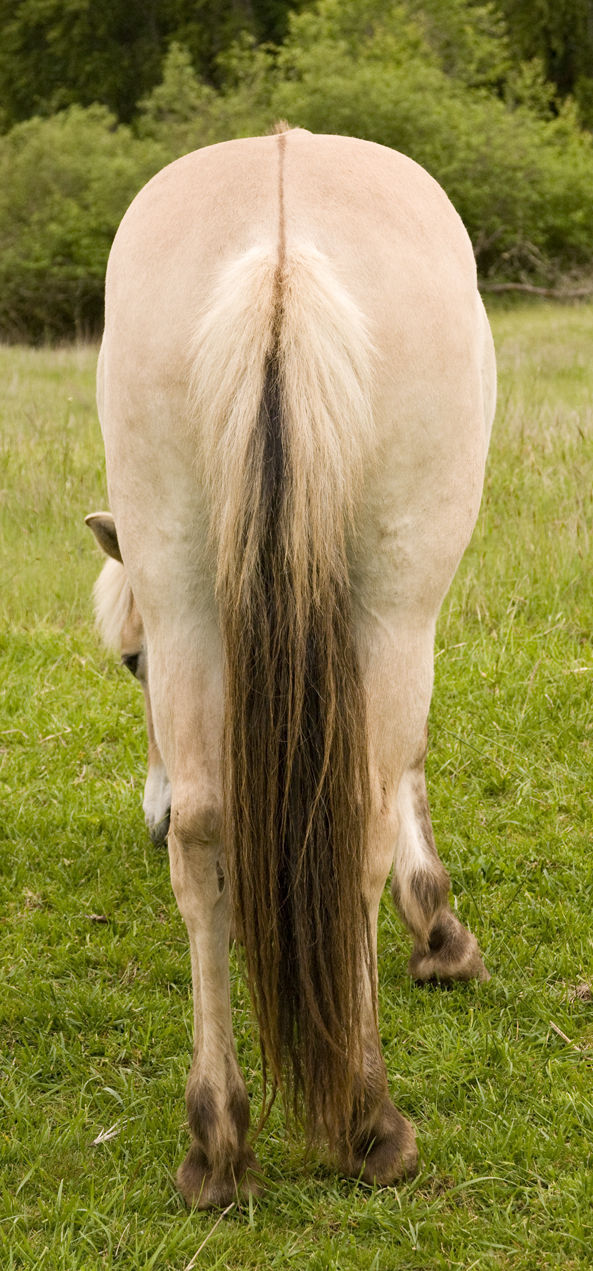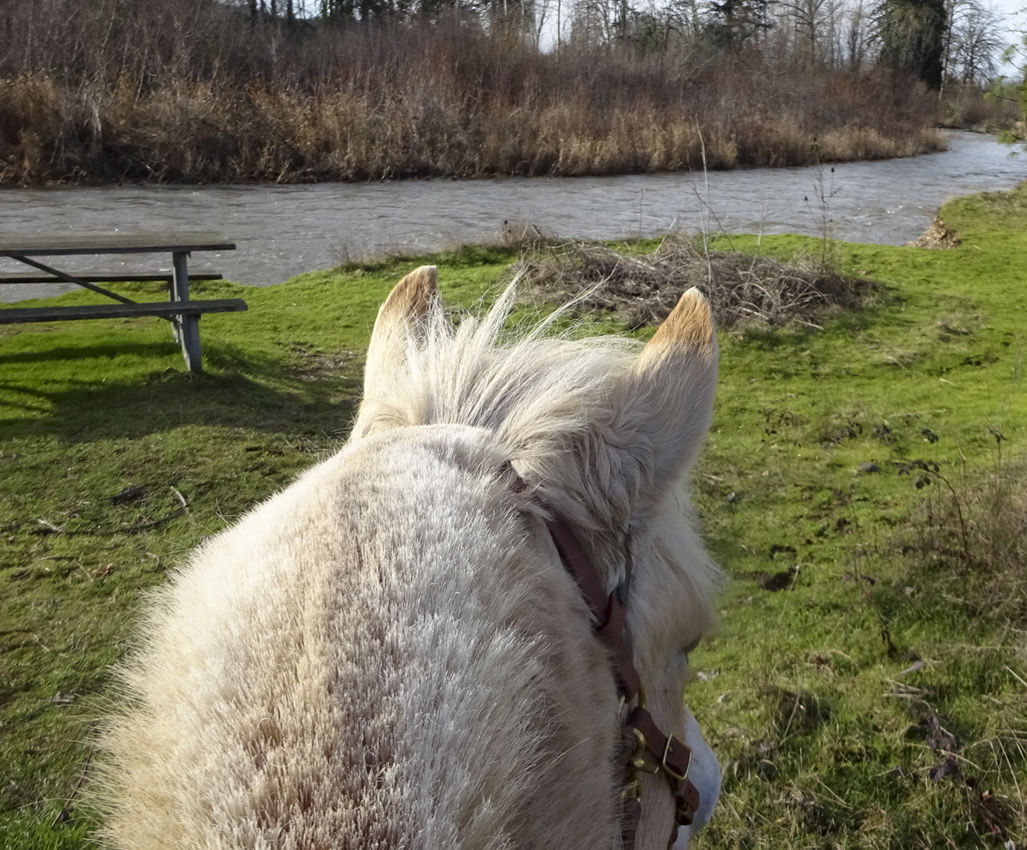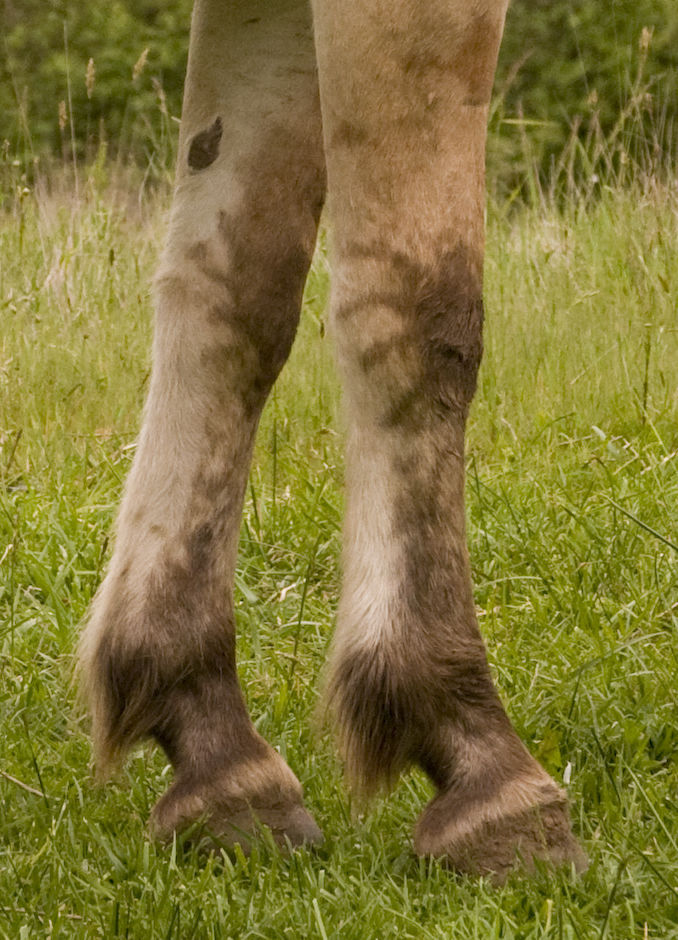
Tail center stripe, brown dun Fjord horse

Mane center stripe, red dun Fjord horse




Anyone can google the basic facts about Fjords — the breed standard, history, and so forth (and there are links at the top of this page if you'd appreciate a starting point).
Below are some important things to know before seeking a Norwegian Fjord horse — things that don't appear on breed information pages, and that many people don't even realize they'd want (or need) to ask.
Enjoy!
No, it's much easier to bleach the outsides of the manes white instead..
Who would waste time doing either one??? Geez!!!
Nope. And a good thing, because I can't ride a wild horse.
Fjords do resemble Przewalski's horses; both have retained many of the wild color traits such as dun coloration, the pangare gene and primitive markings (notably some leg striping) ... but the Przewalski's horse has 66 (33 pair) of chromosomes; domestic horses have 64 (32 pair). No relation! Przewalski's horses have a naturally short, upright mane (Fjord manes must be kept trimmed short; the natural length is rather long) and Przewalski's horses have a correspondingly short tail (unlike the Fjord horse, which has a full-length tail).
Nope. I definitely can't ride a zebra.
Yes, people really have asked this.
Well, no, that one right there is a red [or grey or white] dun ...
That answer invariably gets the "deer in headlights" look. ... people new to Fjords really don't see the difference! What's funny is ... once they see do the differences, quite a few people only want one of the rare colors.. Silly.
Don't we wish!!!
Fjord manes need to be trimmed every 1-2 months (depending on the individual) or they begin to flop over. If even part of the manes starts to lean, the hair shafts get a permanent bend at the bases that can't be overcome with a re-trim. The only way to get the mane to stand up straight again is to "hog" or "roach" (clip down to the skin) and wait for regrowth.
If a Fjord mane is completely grown out — especially if the Fjord is overweight or has very thick and heavy hair — the crest muscles can be weakened and pulled over to one side, creating a perma-flop mane, which permanently reduces that horse's aesthetics and value.. For this reason, most Fjord owners trim manes religiously.
OMG. Wow. NOOOOOO!!!!!
People crusading against riding immature horses (which we certainly agree shouldn't be done) totally blow their credibility with this one ...